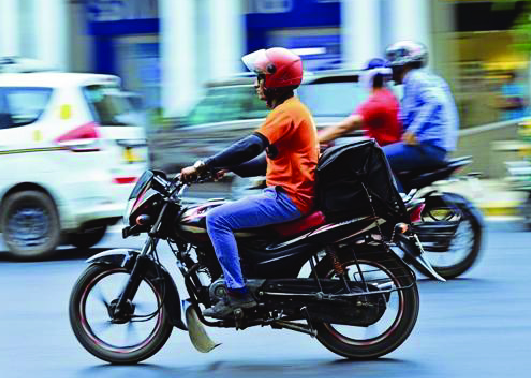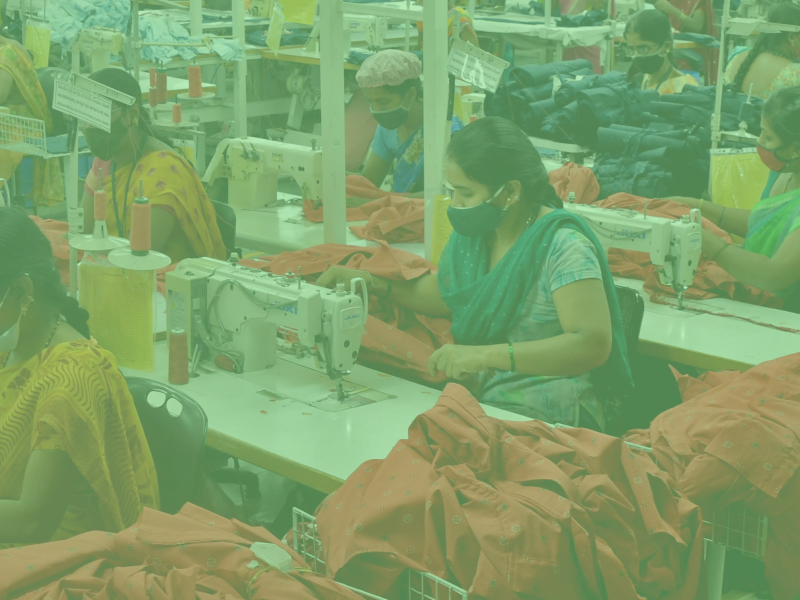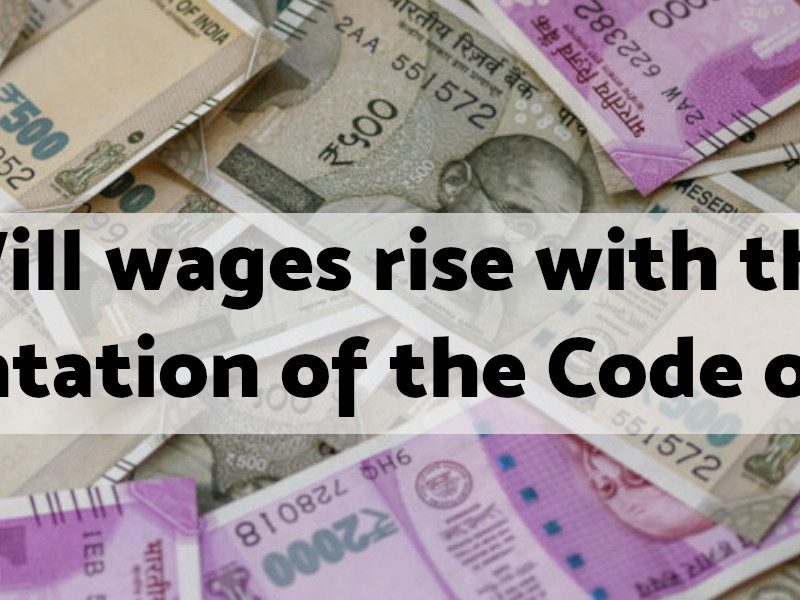… Yes, ‘n’ how many ears must one man have
Before he can hear people cry?
Yes, ‘n’ how many deaths will it take till he knows
That too many people have died?
The answer, my friend, is blowin’ in the wind
The answer is blowin’ in the wind
Bob Dylan
How unsafe is our workplace?
- 9 October 2018: A fire in the gas pipelines at Bhilai Steel Plant of SAIL left 12 workers dead and 11 others critically injured during a regular maintenance procedure.
- 8 August 2018: Another boiler blast, this time at a refinery of Bharat Petroleum (BPCL) at Mumbai, left 45 workers critically injured.
- 13 February 2018: 5 workers died and many others sustained injuries as an ONGC tanker exploded at the Cochin Shipyard in Kerala.
- 21 January 2018: 17 workers were charred to death in a plastic factory in Delhi.
- 1 November 2017: A boiler blast at the National Thermal Power Corporation (NTPC) plant in Unchahar district of Uttar Pradesh claimed the lives of 40 workers and left several others injured.
The incident of fire at the SAIL plant in Bhilai this month prompts us to revisit the issue of workplace safety. While the number of deaths in factories recorded by the Government of India adds upto 695 in the year 2017, deaths in factories is only the tip of an iceberg.
In a study by the British Safety Council in 2017, it was estimated that 38 fatal accidents take place every day in the construction sector in India. In India, according to an ILO report, workplace accidents cause around 48,000 deaths every year which means 131 workers die every day of the year.
These numbers though grave enough, do not even claim that they are able to provide a correct estimate of the state of occupational safety in our country. A substantial number of work related accidents, including fatalities, remain unreported here and in most other countries in the global south.
Why are our workplaces unsafe?
One of the principle goals of globalisation is to search for new ways to lower the cost of production. One strategy that capital has employed to do this is to move from countries where the value of human life is higher to those where society puts very little value to human life. A few lives lost does not matter to policymakers and to employers as the cost of capital investment to avoid these loss of lives is much greater than the compensation for the loss of lives, even if paid the legal dues. Hence it makes business sense to not invest in safety requirements and at worst pay legal compensation dues in case of an accident. With increasing precarisation of work, the claims for compensation has also declined over the years as most irregular workers and their families in many cases do not even know where to claim for compensations in the maze of employer-employee relation and even if they do, the legal maze and expense is the next level of hurdle that they need to negotiate till they are compensated.
Around 94% of Indian workforce is employed in precarious jobs, employed through multi-tier contracting systems i.e., hiring through labour contractors or manpower agencies thereby veiling the principal employer. Many of them are even employed in unregistered and unregulated enterprises supplying to large companies.
Countries of the global south have been competing with each other in a ‘race to the bottom’ to become the cheapest manufacturing hubs. Countries try to woo capital by either providing subsidies to capital like tax rebates, land at throw away prices etc., or by promoting legislation which puts a cap on labour costs.
The 1990s understanding that transnational corporations (TNCs) are ‘footloose’ and hence regulation of capital cannot be done by the state where they operate. The Clinton-Blair ‘Third Way’ concretised this through their understanding that greater equality in society can be achieved through policies to increase the distribution of skills and productive endowments while rejecting income redistribution as the means to achieve this. It emphasized on the commitment of balanced budget, encouragement and promotion of public–private partnerships, minimum government regulation, improving labour supply and individual responsibility. Its core principle was ‘equal opportunity for all, special privilege for none’ thereby ignoring all forms of historical disadvantages that exist in society which perpetuates the existing inequality. This is true both in terms of understanding relation between nations and the relation of the state with its citizens. Thus core to this philosophy were the cuts in social spending, relying on the private sector for self- regulation and thus laying the foundation for a breakdown of the post-world war social compact. Thus, two decades after the Blair-Clinton roadmap was laid out, we have finally reached the point where the Government of India has finally decided to legally dismantle our systems of regulation and monitoring to encourage private investment.
What do we “Make in India”?
The ‘Make in India’ programme was launched by the Government of India in 2014 ‘to encourage companies to manufacture their products in India and also increase their investment’ in 25 sectors. States are being pushed by the centre through a system of ranking based on their Business Reform Action plans which are nothing but policy changes initiated by the states in order to create a ‘business friendly’ investment climate. The indicators deciding the score are Access to Information and Transparency enablers, Single window, availability of land, construction permit enablers and environment registration enablers. This includes labour regulation enablers such as self-certification / third party certification for boilers, introduction of a provision for issuing Factory License and all subsequent renewals with validity of 10 years or more, elimination of the requirement of inspection prior to registration under the Shops and Establishment Act and ensure that the registration is granted within one day from the date of application, Mandate synchronized/joint-inspection under 10 labour laws. The labour reforms undertaken by the Government is Jharkhand is being advertised as Best Practice in which most inspections have been done away with and replaced by self-certification and most licenses are now through single window clearances with automatic renewals for 10 years or more. Self-certification combined with auto renewal of licenses gives a complete freehand to employers to violate all labour laws and that today is being promoted by the government as ‘best practice’.
The ‘self-certification’ regime scraps the power of labour inspectors to take suo moto action against violations in factories. It now requires labour inspectors to provide prior intimation to the employer before a factory inspection initiated through a complaint. Several state governments like Uttar Pradesh and Rajasthan have gone a step further and mandated that a factory inspection has to have a prior approval of the District Collector thereby defeating the purpose of inspection.
India has ratified ILO Convention 81 on Labour Inspection which mandates frequent and as thorough as possible inspections, free entry of inspectors, free access to workplaces, no prior authorised inspections, and an adequate and well-resourced and independent inspectorate. Measures such as self-certification system, complaint-driven inspections, randomised inspections and prior authorised inspection systems are in violation of the Convention.
In 2017, the Delhi State Industrial and Infrastructure Development Corporation reported 450 fire emergencies in the state. In Uttar Pradesh, where 40 workers died in the Unchahar boiler blast, there are only 5 boiler inspectors for 3270 boilers. The labour department has been rendered ill equipped to inspect factories falling in its jurisdiction. There is a grave shortage of labour inspectors who are meant to monitor the implementation of the law.

‘Make in India’ has certainly dismantled the regulatory framework that provided the basis for safety and protection of workers within a workplace to ensure ‘Ease of Business’, but it is yet to inspire confidence in the private sector to invest in the country. In fact, ‘Make in India’ has received less than half of all foreign direct investment (FDI) since 2015. An analysis of FDI inflows between October 2014 and March 2016 revealed that only 1.6% of the manufacturing firms that received FDI during this period were incorporated after October 2014. Thus ‘Make in India’ has had very limited impact on FDI decisions.
New Technology: Driving Isolation and Accidents

We have all seen young men, sometimes women too, zipping past us in motorbikes in metropolitan cities delivering just about anything to our doorstep. They deliver food, clothes, grocery, books, medicines, gadgets, even flowers to a friend who is unwell, that are booked online. Domino’s Pizza famously advertised: “30 minutes or Free” to gain market control over Pizza Hut. Many have wished for traffic snarls to delay the delivery in order to get a free Pizza. Some of them have even thought that this is a way to extract from a super-rich multinational company. But unfortunately it is the delivery worker who pays for the free pizza that the consumer gets for a delayed delivery. So to prevent this deduction in wage, he zips past all of us, he jumps traffic lights, risks his life and gets the pizza on time. The zipping does not end with the delivery as he has to get back to the point of origin to get his next order as his pay is linked to the number of deliveries he is able to make in day. So he once again drives recklessly to get back. There is no data on the number of road accidents that the delivery workers meet with, minor and major, due to this work schedule. Their jobs are insecure, they have no social security, and their work isolates them from each other as they are always on the move. The work also isolates them as each one of them competes against the other to earn an extra delivery for the day. Further GPS enabled tracking devices are also used to monitor their movement. All the data collected from individual systems is then processed by the company to set standards. A worker who can’t furnish the task within the standardised stipulated time falls out of the system. Therefore, the workers perform under high pressure and often meet accidents trying to meet a delivery deadline. These accidents are recorded as road accidents and not workplace accidents and the individual worker is blamed for the accident and the employer takes no responsibility for such an accident. A union of Sales representatives of pharmaceutical companies recorded that the number of road accidents of their members increased exponentially after tracking equipment was provided to the workers. Thus workplace ailments are no longer just restricted to physical illnesses or workplace accidents, new technology along with new management control has meant higher mental stress of workers leading to mental illness.
Big business fascinated with big data collected from the GPS trackers is meanwhile on a spree to reduce the time taken per gig by standardising the time taken for each process. There are processes being developed in Amazon and Tesla factories where workers are given mild electric shocks if the speed at which they are performing is lower than the standardised speed. Workers have to use these devices that perpetually time their tasks and standardises automatically. This leaves no room for different abilities of individual workers.
Can we turn the Wheel for Workers?
In the policy environment that we live across the world, it seems almost insane to believe that we can turn the wheel for the workers. But that is because we have started believing that workers are powerless. And in fact it is true as long as we are individuals fighting just for our individual right. Then we are fighting a losing battle. The power we are up against, that of our employers, our government, is far more than our own. But when we add up, when we come together, we become stronger. Employers are sometimes even willing to hand out small benefits to the workers if it can avoid allowing the formation of a union. They are often trying to replace unions with different committees such as the works committees, health and safety committees, canteen committees etc. claiming that these are committees that have representation of workers. The difference between a union and these committees is that a union is an organisation of the workers where the leadership is democratically elected and is financed by the members of the union while these committees are bodies created by the employer with worker representatives along with management representatives. In most of these committees the worker representatives are nominated by the management and not elected by the workers. Even if they are elected by the workers, they have very little say within these committees. Unions change the balance of power, these committees don’t.
Unions can thus change how work is organised, how workplaces are controlled and how workers are protected. Unions can identify work processes and areas which lead to illnesses and accidents so as to demand changes. It is unions that can empower workers to refuse hazardous work. It is only through collective action and treating safety as a collective responsibility that workplaces can be made healthier and safer for workers.



